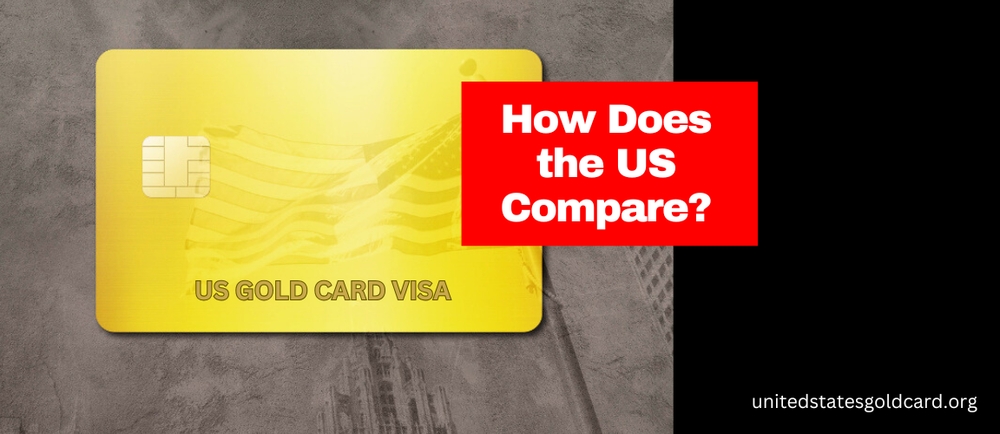Published
- 4 min read
Global Golden Visa Programs: How Does the US Compare?

Global Golden Visa Programs: How Does the US Compare?
Exploring the Differences Between the US Gold Card and Investor Visa Programs Worldwide
Golden visa programs have become a global phenomenon, offering a fast track to residency—and sometimes citizenship—in exchange for a significant investment. As President Trump’s proposed US Gold Card visa makes headlines, it’s important to place it in a global context. In this post, we compare the US initiative with similar schemes in Europe, the UAE, and beyond, shedding light on the investment thresholds, benefits, and requirements that set each program apart.
What Are Golden Visa Programs?
Golden visa programs are designed to attract foreign investment by granting residency rights to investors who meet specific financial criteria. Typically, these programs offer:
- Residency or Citizenship: Fast-tracked access to permanent residency or eventual citizenship.
- Economic Incentives: Benefits such as tax advantages or a streamlined application process.
- Investment Requirements: Minimum investment thresholds that vary significantly from country to country.
The underlying goal is to boost local economies with high-net-worth capital while offering investors a secure foothold in a desirable country.
The US Gold Card: A New Contender
The US Gold Card visa, as proposed by President Trump, represents a significant departure from the traditional EB‑5 investor visa program. Key features include:
- High Investment Threshold: A flat fee of $5 million, aiming to attract only the wealthiest and most committed investors.
- Streamlined Process: A simplified, cash-only approach without explicit job creation requirements.
- Pathway to Citizenship: Promised green card privileges-plus, paving a faster route to eventual citizenship.
While the US initiative is bold in its promise, its high cost and unique structure raise questions about market size and legal viability compared to established global programs.
European Golden Visa Programs: A Market Leader
Europe has been at the forefront of golden visa programs, with countries like Portugal, Spain, and Greece offering appealing options:
- Portugal: One of the most popular schemes, requiring an investment of around €350,000–€500,000 in real estate. Portugal’s program is renowned for its relatively low threshold and favorable tax regime.
- Spain: With a minimum investment of €500,000 in property, Spain’s golden visa program offers a fast route to residency while providing access to the Schengen Area.
- Greece: Known for its affordability, Greece requires an investment of approximately €250,000 in real estate, making it an attractive option for cost-sensitive investors.
European programs typically balance a moderate investment requirement with benefits such as visa-free travel within the EU, making them appealing to a broader pool of investors compared to the steep US threshold.
Middle Eastern Golden Visa Programs: The UAE Model
In the Middle East, the United Arab Emirates offers its own version of investor residency:
- UAE Golden Visa: Designed to attract foreign talent and capital, the UAE offers long-term residency (up to 10 years) for significant investors, entrepreneurs, and specialized talents. The investment criteria vary, but they are generally lower than the US Gold Card’s $5 million mark.
- Attractive Lifestyle and Tax Benefits: The UAE’s golden visa comes with the added allure of a tax-friendly environment, world-class infrastructure, and an exceptional lifestyle.
This model emphasizes not only the financial contribution but also the prospect of a high quality of life and robust economic infrastructure, setting it apart as a compelling alternative to both European and US programs.
How Does the US Compare?
When comparing the US Gold Card visa to its global counterparts, several key distinctions emerge:
- Investment Amount: The US proposal is significantly more expensive, targeting ultra-high-net-worth individuals. In contrast, European and UAE programs cater to a wider range of investors by setting lower entry thresholds.
- Process Complexity: While the US promises a streamlined process, the high investment might limit participation. European programs are known for their relative simplicity and faster processing times.
- Benefits and Mobility: European golden visas often come with extensive travel privileges within the Schengen Area, while the UAE’s visa offers a unique blend of residency benefits and an attractive lifestyle. The US Gold Card focuses on economic impact and revenue generation, aiming to bolster the national economy, but it lacks the additional perks like regional mobility.
Final Thoughts
The US Gold Card visa is a fascinating experiment in investor immigration policy, designed to attract a select group of elite investors with a high-cost, high-reward model. However, when placed side-by-side with the golden visa programs of Europe and the UAE, its steep price tag and narrow target audience become apparent. While the US initiative may generate substantial revenue and streamline the path to citizenship for a few, its global appeal might be limited compared to more accessible programs that offer broader economic and mobility benefits.
Ultimately, the success of the US Gold Card visa will depend on its ability to deliver on promises of economic revitalization without alienating potential investors through prohibitive costs. As countries continue to refine their investor visa programs, the international landscape remains diverse—each model offering its own set of advantages tailored to different investor profiles.